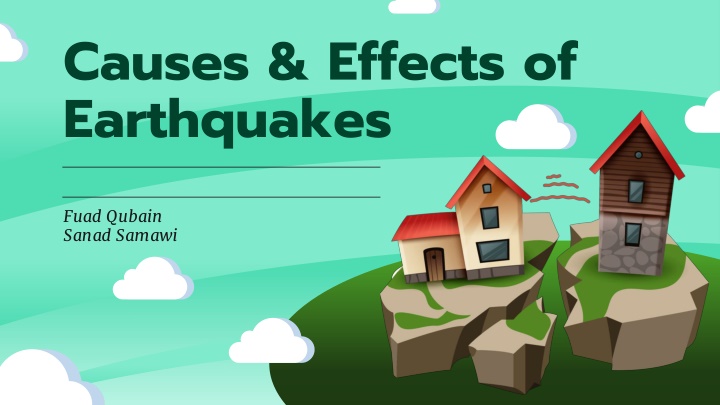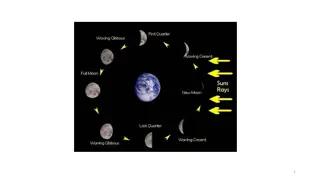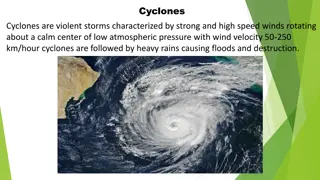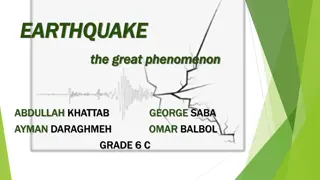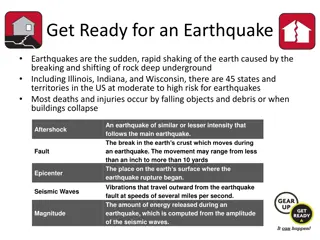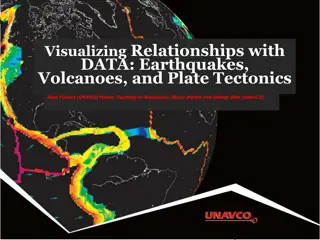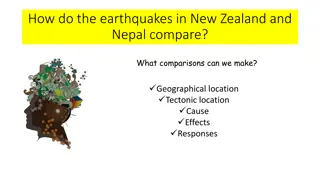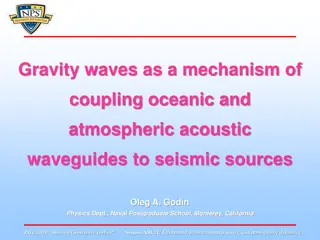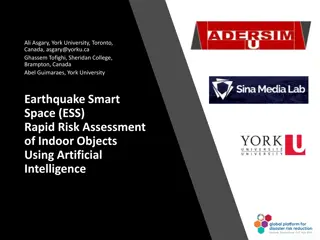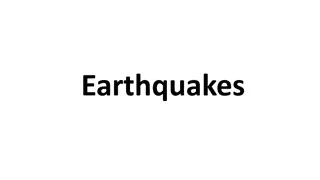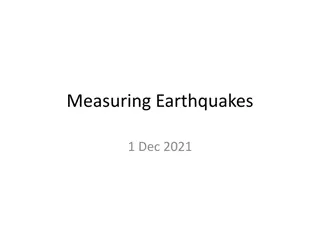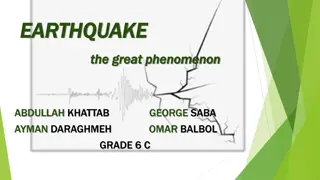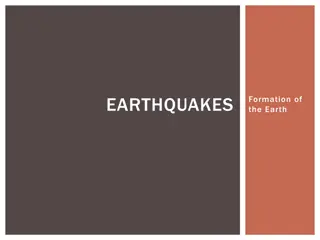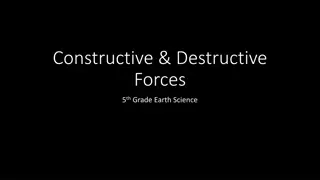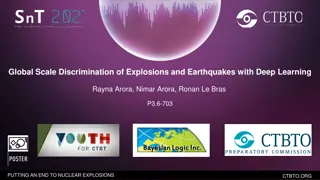Causes & Effects of Earthquakes: Understanding the Impact
An earthquake is a sudden, violent shaking of the Earth's surface resulting from energy release in the crust. Explore the causes, effects, and detection methods of earthquakes. Learn about seismic waves, tectonic plate movement, and the devastating impacts on the environment and human populations.
Download Presentation

Please find below an Image/Link to download the presentation.
The content on the website is provided AS IS for your information and personal use only. It may not be sold, licensed, or shared on other websites without obtaining consent from the author.If you encounter any issues during the download, it is possible that the publisher has removed the file from their server.
You are allowed to download the files provided on this website for personal or commercial use, subject to the condition that they are used lawfully. All files are the property of their respective owners.
The content on the website is provided AS IS for your information and personal use only. It may not be sold, licensed, or shared on other websites without obtaining consent from the author.
E N D
Presentation Transcript
Causes & Effects of Earthquakes Fuad Qubain Sanad Samawi
TABLE OF CONTENTS Detect Earthquakes 01 04 Introduction Causes of Earthquakes Earthquakes Impacts 02 05 Effects of Earthquakes 03 06 Conclusion
Introduction of earthquakes An earthquake is a sudden and violent shaking of the Earth's surface, caused by the release of energy in the Earth's crust. It is a natural occurrence that results from the movement and interaction of tectonic plates, which make up the Earth's outermost layer. When the stress and pressure along fault lines become too great, rocks on either side of the fault slip, releasing stored energy in the form of seismic waves. These waves radiate outward from the point of origin, known as the focus, and the point on the Earth's surface directly above it is called the epicenter. Earthquakes can vary in magnitude, which measures the energy released, and can have various effects such as ground shaking, surface rupture, landslides, tsunamis, and structural damage. Understanding earthquakes is important for assessing seismic hazards, improving building codes, and developing mitigation strategies to minimize their impact.
Causes of Earthquakes Earthquakes are caused by the sudden release of energy in the Earth's crust, resulting in seismic waves. The primary causes of earthquakes can be categorized into three main types: volcanic, human-induced, and tectonic. Volcanic Causes: Earthquakes can also be triggered by volcanic activity. As magma rises to the surface, it can cause significant pressure and stress, leading to earthquakes. Human-Induced Causes: Human activities can induce earthquakes Tectonic Causes: The majority of earthquakes are tectonic in nature, resulting from the movement of tectonic plates.
Effects of Earthquakes Earthquakes can have devastating effects on the environment and human populations. The severity of the effects depends on various factors, including the magnitude of the earthquake, depth of the focus, distance from the epicenter, population density, building structures, and preparedness levels. Ground Shaking Surface Rupture Tsunamis Landslides and Avalanches Fires Human Casualties and Displacement
Detect Earthquakes Seismometers allow us to detect and measure earthquakes by converting vibrations due to seismic waves into electrical signals, which we can then display as seismograms on a computer screen
Earthquakes Impacts The impacts of earthquakes can vary depending on various factors, including the magnitude of the earthquake, the depth of the earthquake's focus, the distance from the epicenter, local geological conditions, and population density. Here are some common impacts associated with earthquakes: Ground Shaking Surface Rupture Tsunamis Landslides Secondary Hazards Human Casualties and Injuries Economic Disruption Psychological and Societal Impact
Conclusion In conclusion, earthquakes are natural phenomena that occur due to the movement and release of energy within the Earth's crust. They cannot be prevented or avoided, but their impacts can be mitigated through preparedness and resilience measures. Earthquakes can cause significant damage to buildings, infrastructure, and communities, leading to casualties, economic disruption, and psychological effects.
References Incorporated Research Institutions for Seismology (IRIS): https://www.iris.edu/ Geological Society: https://www.geolsoc.org.uk/
